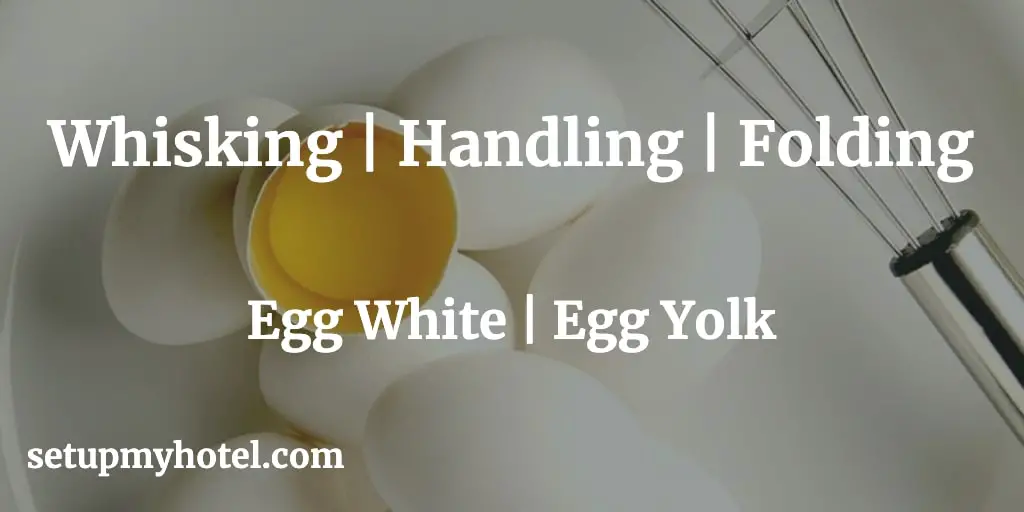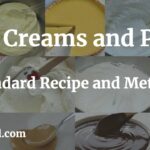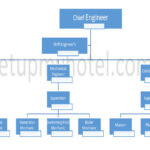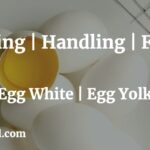Methods of Whisking, Handling and Folding Egg White and Egg Yolk
1. How to separate egg white and egg yolk professionally?
- The best way to separate the white and yolk is by using the eggshell.
- Avoid breaking the egg into one hand and allow the white to run through the finger.
- The white can absorb grease and odours which will inhibit its beating qualities.
- Have two bowls ready, Crack the egg as close to its center as possible by hitting the shell firmly against the edge of a bowl or the sharp edge of a counter.
- Using your thumbs, pull shells apart, allowing some of the white to fall into The bowl.
- Pour yolk from the shell into the shell, allowing white to dribble into the bowl.
- Use one side of the shell to detach the remaining white from the yolk.
- Use a shell half to remove.
- Any bits of yolk that might slip into the bowl.
- Place the yolk gently into the second bowl.
2. Steps for whisking egg white:
- Whisking egg whites are the basis of making meringues and are used to lighten the soufflés and mousses.
- Utensils should be large enough to allow for a full increase in the volume of foam. However, it should not be too large that the beater has no contact with egg whites.
- A rotary beater or wire whip should be used.
- The thinner the blade or finer the whip, the smaller the air cells and the finer the foam.
- Egg white whips rapidly at room temperature.
- The whites must be free from any traces of yolks, oil from hands or bowl, and even water.
- Use a copper or stainless steel bowl as glass and ceramic bowls seem to repel the whites and separate them.
- Rinse the bowl with vinegar or lemon juice to remove any impurities.
- Salt and cream of tartar are used in egg white.
- Salt is added to enhance the flavor.
- Lemon juice or cream of tartar makes the egg white foam more stable.
- Sugar stabilizes the foam and prevents it from becoming grainy, but only be added after the whites are stiff.
- The addition of water up to 40% of the volume of the egg increases the volume of foam.
- Water is to be added or incorporated towards the end of beating the egg white.
3. Steps for whisking egg yolk:
- Egg yolks are often whisked separately with or without sugar, sometimes over the heat.
- The whisking increases the volume and lightens sauces like Hollandaise or adds air to cakes and batter.
- Using the same bowl, with the mixer fitted with the same whisk attachment, place the large egg yolks.
- If you are using a mixer for whisking the egg white use the same bowl and attachment.
- Add the egg yolks to the mixture and set the mixture to a low speed.
- With the mixer on low speed, add the sugar to the side of the bowl.
- Once the above is completed, stop the mixer and scrape the sides and bottom of the bowl.
- Then start again at high speed and beat until thick and lemon colored about 4 to 5 minutes.
- One can see that the egg yolk will fall in a ribbon pattern when you lift it with the whisk and sit on top of the swirl for 1-2 seconds before sinking.
- Once the mixture forms like a ribbon, at this stage stop the mixture machine.
4. Method of folding egg whites:
- It is a method of combining a light mixture and a heavier one without deflating the lighter one.
- To lighten the heavier or base mixture, add about a quarter of the beaten whites and stir them in thoroughly through the cut-and-fold method.
- Then spoon in the remaining whites and gently fold in by using a rubber spatula.
5. How to handle beaten egg whites properly?
Beaten egg whites are used to give lightness and rising power to soufflés, puffy omelets, cakes, some pancakes and waffles, and other products. The following guidelines will help you handle beaten egg whites properly.
Fat inhibits foaming: When separating eggs, be careful not to get any yolk in the whites. Yolks contain fats. Use very clean equipment when beating whites.
Mild acids help to foam: A small amount of lemon juice or cream of tartar gives more volume and stability to beaten egg whites. Use about 2 teaspoons of cream of tartar per pound of egg whites (20 ml per kg).
Egg whites foam better at room temperature: Remove them from the cooler 1 hour before beating.
Do not overbeat: Beaten egg whites should look moist and shiny. Overbeaten eggs look dry and curdled and have lost much of their ability to raise soufflés and cakes.











